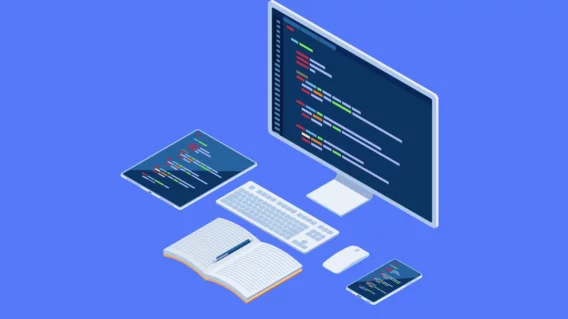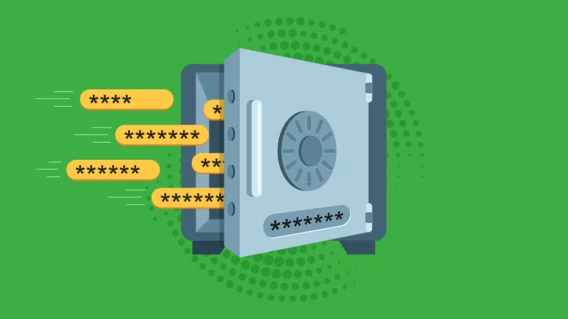The Hidden Danger: How Software Bloat Poses a Security Threat

Software bloat can affect performance and act as a hidden vector for security vulnerabilities. This article looks at how bloated software, with its excessive complexity and unnecessary features, opens the door to cyber threats.
What is Software Bloat
Software bloat refers to software growing larger and more complex over time, often without adding value or functionality. It leads to an inflated codebase, slow performance, higher memory and storage needs, and worsened user experience. This issue affects all software types, from operating systems to mobile apps.
In addition to wasting resources, software bloat affects maintainability, performance, and security. Bloated applications are harder to manage and update, increasing the risk of bugs and vulnerabilities. They also strain system resources, causing slower performance and a poor user experience.
Common Causes of Software Bloat
- Unnecessary Features & Quick Fixes. Software bloat often stems from adding new features not crucial to the software’s main function. Known as “feature creep” or “scope creep,” this occurs when new features are added to satisfy user demands or compete with rivals, without considering their impact on efficiency and usability. Similarly, quick fixes or temporary solutions, often accumulated as technical debt, can compound the problem by introducing inefficient code that becomes permanent, further inflating the software size without adding value.
- Redundant Code & Legacy Systems. Bloat can also arise from redundant code within the codebase, including outdated legacy systems that have been patched over time rather than optimized or replaced. This not only increases the software’s size but also embeds vulnerabilities deep within the system, making maintenance and security patching more complex.
- Over-Reliance on Third-Party Libraries. Developers frequently use third-party libraries to expedite development and add complex features. However, relying too heavily on these can cause bloat, particularly if entire libraries are used for just a few features. Each library adds to the application’s size and introduces additional code to maintain and secure.
Technical Implications of Software Bloat
Software bloat compromises efficiency while simultaneously amplifying security risks through its extensive and often unnecessary complexity. Let’s examine the technical implications.
Increased Attack Surface
Bloated software, with its extensive codebase and numerous features, significantly enlarges the attack surface, offering adversaries a multitude of entry points. Each redundant line of code or unused feature can harbor vulnerabilities, posing potential security risks.
Complex features, like outdated library-dependent image processing capabilities, introduce exploitable weaknesses, challenging developers to secure the application comprehensively.
Dependency Vulnerabilities
The use of third-party dependencies, while accelerating development, intertwines external risks into the software’s security framework. A vulnerability in a commonly used library can impact numerous applications. This issue is magnified in bloated software, where the volume of dependencies complicates the tracking and updating process, leaving vulnerabilities unchecked.
Performance and Resource Consumption
Software bloat strains system performance, consuming substantial memory and processor resources. Bloated applications, burdened with extensive code and multiple background processes, can overwhelm robust systems, causing slow performance and decreased responsiveness. This not only affects user experience but also introduces indirect security risks.
For example, software that demands high resources can make systems more vulnerable to Denial of Service (DoS) attacks, where attackers target the software’s resource-intensive nature to disrupt service and exploit systems further.
Maintenance and Security in Bloated Software
Bloated software adds complexity to maintenance and heightens security challenges. As the codebase grows with non-essential features and dependencies, spotting vulnerabilities becomes tougher. This intricacy not only makes maintenance arduous but also hampers the timely integration of crucial security updates.
The dense structure of bloated software can conceal security flaws, slowing the detection of vulnerabilities. In today’s rapidly evolving threat landscape, such delays are particularly risky. Moreover, extensive testing is needed to ensure patches don’t disrupt existing functionalities or introduce new problems and delay security update deployment.
Delayed security patches leave software vulnerable to known threats. The lack of optimized continuous integration and deployment (CI/CD) practices exacerbate the security gap. To address these issues, developers should focus on software design that prioritizes code quality, minimizes unnecessary features, and carefully manages dependencies. Employing automated testing and deployment tools within a CI/CD framework can streamline the update process, enhancing the software’s defense against cyber threats.
Addressing maintenance and security issues in tandem can improve software resilience, protecting it from operational inefficiencies and security breaches.
Mitigation Strategies
To tackle software bloat challenges, developers and organizations need strategies that improve software performance and security. These strategies aim to balance functionality and efficiency, keeping software strong against threats while ensuring a good user experience.
Cultivating Lean Software
Developers can combat software bloat and its associated risks by embracing practices that prioritize efficiency and security:
- Code Refactoring. Refactoring, a process of reorganizing and optimizing existing code without altering its functionality, is crucial for removing obsolete or redundant code, streamlining the codebase, and improving maintainability. Effective refactoring enhances software performance and simplifies the identification and fixing of security vulnerabilities.
- Modular Design. Adopting a modular design, where software is divided into independent modules each handling specific functionalities, reduces interdependencies, and enhances manageability and scalability. In terms of security, modular design allows for isolating vulnerabilities to individual modules, facilitating quicker and safer updates or patches.
- Prudent Use of Libraries. While third-party libraries expedite development, they also add external dependencies that might contain vulnerabilities. Careful selection of well-supported and secure libraries is essential, along with regular updates to mitigate risks from outdated or insecure dependencies.
- Continuous Security Audits. Regular security audits are key to a proactive security approach, helping identify vulnerabilities through automated scans, manual code reviews, and penetration testing. Integrating these audits into the development lifecycle ensures ongoing resilience against new threats.
Strengthening Software Security
In addition to these development practices, employing continuous integration/continuous deployment (CI/CD) pipelines can automate testing and deployment processes, ensuring that security patches and updates are applied as soon as they become available.
Conclusion
Software bloat not only impacts resource efficiency but also introduces significant security risks, leading to potential breaches. Understanding excessive code and dependencies enables developers and users to mitigate vulnerabilities effectively.
Best practices in software design, regular code audits, and vigilance against cyber threats are essential for maintaining secure, efficient, and reliable software. Both developers and users must recognize the risks associated with software bloat and commit to a sustainable, security-focused approach to software development and usage.
Emsisoft Endpoint Protection: Award-Winning Security Made Simple
Experience effortless next-gen technology. Start Free TrialAt Emsisoft, we understand the importance of lean software in maintaining high security and performance standards. Despite the evolving threat landscape, our installer size has increased only modestly from ~300 Mb to 394 Mb over the past 10 years. This exemplifies our commitment to providing efficient, effective protection that doesn’t contribute to software bloat.


